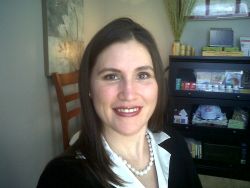 Acupuncture and Oriental Medicine have a proven track record as the primary healthcare system used in China for the last 2,000 years. Acupuncture has gained a deep empirical basis through clinical practice for its effectiveness. Only clinically effective treatments have remained over time. Ancient and modern acupuncture texts along with collective clinical experience now educate American healthcare workers. During a four year Master of Science degree in Traditional Oriental Medicine, students learn what is called “differential diagnosis” and treatment of common illnesses and injuries. Throughout their education students begin to specialize by way of medical expertise and personal interest.
Acupuncture and Oriental Medicine have a proven track record as the primary healthcare system used in China for the last 2,000 years. Acupuncture has gained a deep empirical basis through clinical practice for its effectiveness. Only clinically effective treatments have remained over time. Ancient and modern acupuncture texts along with collective clinical experience now educate American healthcare workers. During a four year Master of Science degree in Traditional Oriental Medicine, students learn what is called “differential diagnosis” and treatment of common illnesses and injuries. Throughout their education students begin to specialize by way of medical expertise and personal interest.
The contemporary foundation for evidence based medicine has driven thousands of acupuncture clinical trials to become published. There are hundreds of literature reviews and meta-analyses of gathered statistics available for those seeking to explore resources within the modern scientific medical realm. You can learn more about these subjects at PubMed and the National Library of Medicine.
Role of Acupuncture in Health Care: As defined by the National Institute of Health (NIH)
• Complementary
• Alternative
• Primary
The effectiveness in clinical practice and excellent safety record of acupuncture make it a reasonable complementary treatment for most diseases and conditions. Acupuncture has few known contraindications, and it has not been reported to interfere with other treatments. It is safely used to complement and enhance other forms of medical treatment. It may also be used to reduce adverse side effects experienced from other forms of treatment. Conventional treatments may be contraindicated or deemed undesirable for some conditions due to unfavorable risk to benefit ratios. Acupuncture is a reasonable alternative in these cases. Patients whose doctors have done all that they can for them or who do not respond to conventional therapies may find some relief through acupuncture. “Acupuncture may be considered a conservative treatment, not only for those conditions where its efficacy has been proved, but also where the efficacy, safety, or appropriateness or other therapies is in doubt.” (NIH report)
Increasingly, across the country, acupuncture is being integrated into western medical practices and hospital settings in conjunction with conventional therapies. Acupuncture is often used to reduce post-surgical pain and swelling, and increase the range of motion in joints. Acupuncture lowers the need for analgesics (pain relief meds), thus reducing risks of adverse drug effects. The NIH report states: “One of the advantages of acupuncture is that the incidence of adverse effects is substantially lower than that of many drugs or other accepted medical procedures used for the same conditions.” (NIH report)
Acupuncture Helps:
 “The data in support of acupuncture are as strong as those for many accepted Western Medical therapies…There is sufficient evidence of acupuncture’s value to expand its use into conventional medicine and to encourage further studies of its physiology and clinical value” (NIH 1997)
“The data in support of acupuncture are as strong as those for many accepted Western Medical therapies…There is sufficient evidence of acupuncture’s value to expand its use into conventional medicine and to encourage further studies of its physiology and clinical value” (NIH 1997)
Current studies on the physiological and scientific basis of how acupuncture works indicate that the therapeutic effects are brought about through a range of different mechanisms within the body. As an example, acupuncture is proven to regulate sympathetic/parasympathetic imbalances to promote immune function. Current research also shows that acupuncture needles have a localized effect on recently rediscovered “C-fibers” beneath the skin. Then, in turn “C-fibers” stimulate neurotransmitters within the brain to produce specific sequenced healing responses throughout the body.
General improvements in health status have consistently been observed in conjunction with acupuncture treatment. For example, a study of 762 patients who received 6 acupuncture treatments showed significant improvements in 7 out of 8 measured categories (General Health, Bodily Pain, Vitality, Social Functioning, Mental Health, and both Physical and Emotional Roles) as compared to a control group without treatment.
Acupuncture and Oriental Medicine can do so much more than simply improving function and stopping pain in the body. Additionally patients may experience an improvement in their overall sense of balance and well-being. Throughout the course of treatment, it is possible to increasingly achieve levels of comfort that eventually become a “new” normal experienced by the patient.
